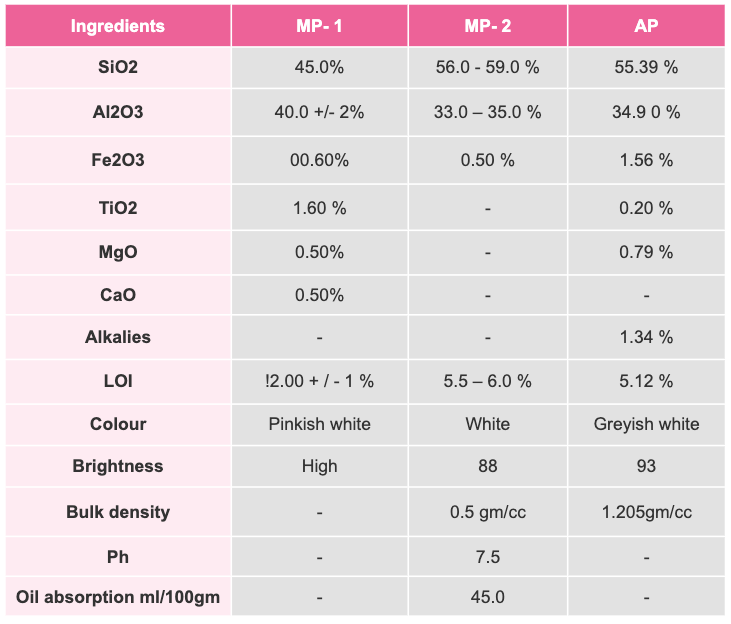Pyrophyllite
Occurrence : Pyrophyllite belongs to the montmorillonite group of minerals. It is remarkably similar totalc, which belongs to the same mineral family, except that magnesium is substituted foraluminium. In fact, chemical tests are often requires to tell the two apart.pyrophyllite breaks or exfoliates into leaves when fired to temperatures in excess of800°C as a result of dehydration of its structure.
Structure : Pyrophyllite has a sheet-like structure consisting of two silicate layers being sandwichedbetween gibbsite (Al(OH)3) layers

Properties of Pyrophyllite
- Pyrophyllite is quite soft with a Mohs hardness of 1 to 1.5 and can be scratched witha finger nail
- It can be machined to tight tolerances using conventional maching techniques and tools
- It is thermally stable up to about 800°C when it will begin to exfoliate
USAGES
Historically pyrophyllite has been used for carving statues and ornaments owing to its relative ease of machinability. More recently,resistors, transducer cores, high vacuum gaskets and insulators in electron microscopes. Other uses for pyrophyllite are in:
- Ceramic formulations e.g. tile and refractory compositions
- Plastics and rubber as a filler
- Paint
- Insecticides
Main features : High degree of Absorption, free From silica and others Low bulk density, Very low mositure
Applications : Filler in rubber industry Reinforcing filler against Alumina silicate in rubber Foot wear, General purpose filler , as extended filler in paints


